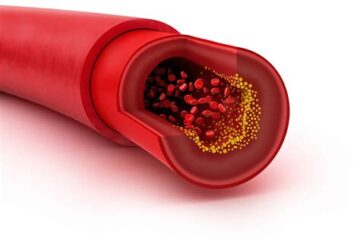
בפוסט זה – פעילות גופנית בשעות הפנאי מפחיתה את הסיכון לשבץ מוחי @ יואל קסלר- אנו מדפיסים מחדש נתונים שפורסמו לאחרונה המדגימים שלפעילות גופנית בשעות הפנאי בכל רמה יש יתרונות חיוביים בהפחתת שבץ מוחי.

In this post – Leisure time exercise reduces stroke risk @ יואל קסלר- we reprint data recently published in BMJ that demonstrates that leisure time exercise at any level has positive benefits in stroke reduction.
Risk of stroke with different levels of leisure-time physical activity: a systematic review and meta-analysis of prospective cohort studies
- http://orcid.org/0000-0002-8059-6427Federico De Santis1,
- http://orcid.org/0000-0001-8009-8543Michele Romoli2,
- http://orcid.org/0000-0002-0321-7155Matteo Foschi1,
- Francesco Domenico Sciancalepore3,
- http://orcid.org/0000-0002-6794-3850Lucio D'Anna4,
- http://orcid.org/0000-0003-1328-3620Lorenzo Barba5,
- http://orcid.org/0000-0003-0631-8506Samir Abu-Rumeileh5,
- http://orcid.org/0000-0003-0651-1939Simona Sacco1,
- http://orcid.org/0000-0001-9501-4031Raffaele Ornello1
- Department of Biotechnological and Applied Clinical Sciences, University of L'Aquila, L'Aquila, Italy
- Department of Neuroscience, Neurology and Stroke Unit, Maurizio Bufalini Hospital, Cesena, Italy
- Department of Medicine, University of Pisa, Pisa, Italy
- Department of Stroke and Neuroscience, Charing Cross Hospital, Imperial College London NHS Healthcare Trust, London, UK
- Department of Neurology, Martin Luther University Halle Wittenberg, Halle, Germany
- Correspondence to Dr Raffaele Ornello, Department of Biotechnological and Applied Clinical Sciences Via Vetoio, L'Aquila, IT 67100, University of L'Aquila, L'Aquila, Italy; [email protected]
Abstract
Background Leisure-time physical activity (LTPA) protects against vascular diseases. Whether and to what extent different levels of LTPA, including lower ones, benefit stroke prevention is still unclear.
Methods We searched prospective cohort studies, indexed on PubMed and Scopus, published in English up to 22 April 2023, that investigated, in a general healthy population, the relationship between different predefined LTPA levels, compared with inactivity, and the risk of any type of stroke. We applied random effect modelling for meta-analyses and meta-regression to control for the impact of age and sex.
Results Out of 3064 screened articles, 15 articles on 16 cohorts of subjects were included in meta-analyses, with a total of 752 050 followed-up subjects. Mean follow-up was 125.7±77.5 months. Included studies identified three (none, below target and ideal) to five (none, insufficient, low, moderate and intense) levels of LTPA. In the five studies identifying three levels of LTPA, compared with no LTPA, below target (risk ratio (RR)=0.82, 95% CI=0.75 to 0.88) and ideal LTPA significantly reduced stroke risk (RR=0.71, 95% CI=0.58 to 0.86).
Lower levels of LTPA also mitigated stroke risk in studies reporting on four (n=6; RR=0.73, 95% CI=0.62 to 0.87 favouring moderate LTPA over no LTPA) and five levels (n=2; RR=0.71, 95% CI=0.58 to 0.88 favouring moderate LTPA over no LTPA). The benefits of LTPA were independent of age and sex.
Conclusions According to our results, all levels of LTPA can be beneficial for stroke prevention, including levels currently regarded as low or insufficient. People should be encouraged to be physically active even at the lowest levels.
For more interesting articles lime this check out our blog.


